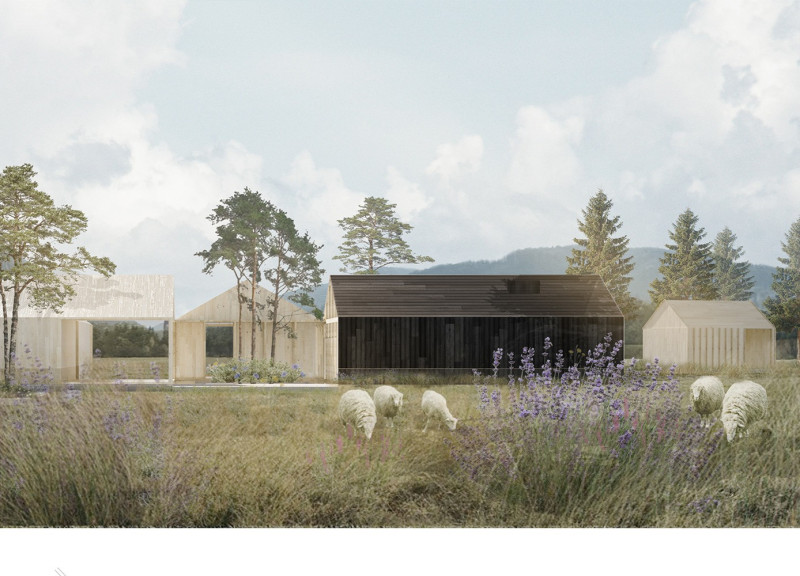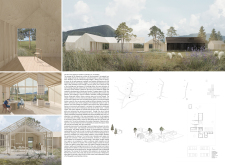5 key facts about this project
The design project located in Liptovsky Jan, Slovakia, is a hospice intended to provide care for individuals facing terminal illnesses. Drawing inspiration from the nearby village of Vlkolinec, a UNESCO World Heritage site, the design reflects aspects of traditional Slovak rural architecture. The layout features five interconnected buildings that prioritize both community interaction and the need for individual privacy, which is crucial in a hospice environment.
Building Layout
The layout consists of five separate structures, each designed for specific purposes, including therapeutic rooms, dining facilities, a library, a communal area, and a chapel. This organized approach emphasizes accessibility and ease of movement throughout the space. By fostering connections among patients, families, and staff, the design promotes an atmosphere that encourages both social engagement and personal moments of tranquility.
Material Selection
Cross-Laminated Timber, or CLT, is the primary material used in the construction. This choice emphasizes sustainability and helps create a connection with traditional architectural practices found in the region. The project employs two shades of wood that reflect the aesthetic of the traditional homes in Vlkolinec. In addition, charred timber is used in the common area, reinforcing a sense of community and helping residents feel at home in their surroundings.
Interior Environment
Natural light is a key element in the interior design, achieved through strategically placed windows and open spaces. This enhances the connection between indoor areas and the landscape outside. Plywood is primarily used for finishes, contributing to a clean and inviting atmosphere. Together, these elements create a supportive environment for patients and their families, making the space feel warm and welcoming.
Connection to Nature
The chapel is situated outside the main living areas, surrounded by fields and trees. This thoughtful placement encourages reflection and connection to the natural world. It aligns with the principles of biophilic design, which highlight the healing benefits of nature. The surrounding landscape complements the design by creating a continuous relationship between the constructed environment and nature, enriching the overall experience for visitors and residents.



















































